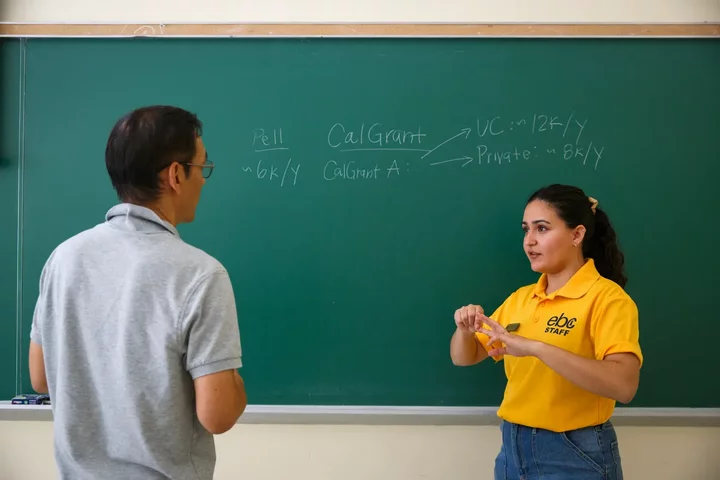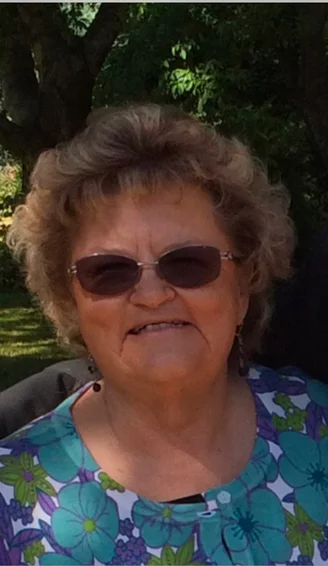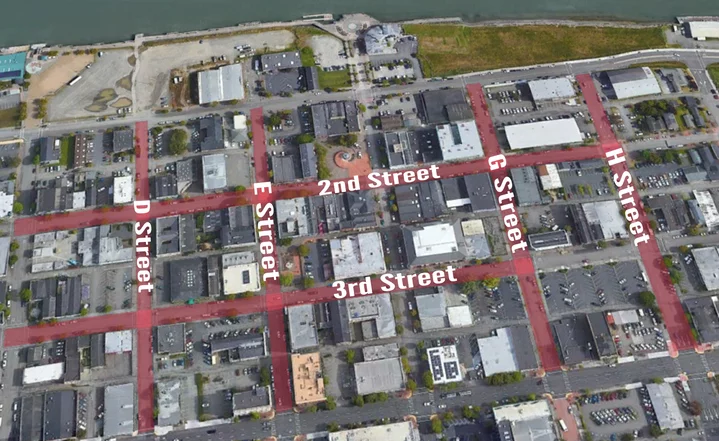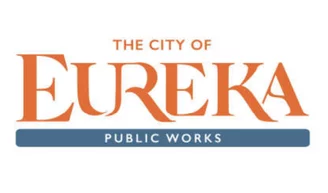Woman Whose Body Was Found Near Trinidad 43 Years Ago Identified Using Forensic DNA Testing
LoCO Staff / Tuesday, Nov. 7, 2023 @ 9:43 a.m. / Crime
Press release from the Humboldt County Sheriff’s Office:
A 43-year mystery has been solved and a family is finally getting closure thanks to a partnership between the Humboldt County Sheriff’s Office (HCSO), the California Department of Justice (CA DOJ) and Othram Inc.
On February 11th, 1980, the Humboldt County Sheriff’s Office (HCSO) responded to a call of possible human remains located in the brush off Stagecoach Rd, near Trinidad. A HCSO detective responded and began an investigation. A female body, described as 20-30 years old, reddish-brown hair, 5’9” tall, weighing 170 pounds, was located in a sleeping bag.
During the investigation the California Department of Justice (DOJ) was able to recover a latent fingerprint which was ran through the Automated Latent Print System with no reported matches. A forensic dental examination was completed by a local dentist. An autopsy was completed, and the cause of death was listed as an overdose. A DNA sample was obtained and entered into both the California Missing Persons DNA Database and the National Unidentified Persons DNA Index (#UP55390). The DNA profile was routinely searched against profiles from both missing persons and other human remains in the Combined Index System (CODIS). No profile matches were ever made.
Missing persons cases stay open until solved. In December of 2022 the HCSO and the CA DOJ partnered with Othram Inc, a forensic genealogy lab, to determine if advanced forensic DNA testing could help establish an identity for the unidentified woman or a close relative. CA DOJ sent Othram a DNA extract from the unknown woman’s remains. Othram scientists used Forensic-Grade Genome Sequencing to build a comprehensive DNA profile for the woman. Once the profile was built, Othram’s in-house genealogy team used forensic genetic genealogy to produce investigative leads.
In August of 2023, the HCSO received the Othram report indicating the DNA profile may be that of Denise Gail Cruz, born in 1953. The report included several genetic relatives, including a possible brother named Mark from Colorado. HCSO investigators were able to contact Mark, who confirmed he had a sister named Denise Gail Cruz. A DNA sample was obtained from Mark and sent to CA DOJ for comparison to the unknown female. CA DOJ was able to confirm that Mark and Denise were genetic relatives. For unknown reasons Denise stopped communicating with family members. Their last contact with her was in September of 1979. Denise had been living a transient lifestyle and was suffering from untreated mental health issues. As the family was not sure whether the loss of contact was intentional, Denise was never reported as missing.
HCSO thanks the California Department of Justice DNA lab and Othram for their outstanding work and assistance in solving this case and providing the Cruz family with some closure for their missing loved one. The HCSO is continuing its partnership with the CA DOJ and Othram and is reviewing several of our missing persons investigations for the use of this latest DNA technology.
Anyone with information regarding Denise Cruz and her last known activities or whereabouts prior to her death, or information that may assist in the investigation of any open missing persons cases, is asked to contact HCSO Cold Case Investigator Mike Fridley at 707-441-3024.
BOOKED
Today: 3 felonies, 17 misdemeanors, 0 infractions
JUDGED
Humboldt County Superior Court Calendar: Today
CHP REPORTS
Rayipa Ln / Scenic Dr (HM office): Traffic Hazard
11274-11607 Us199 (HM office): Trfc Collision-No Inj
Panther Rd / Sr299 (HM office): Animal Hazard
1451 Glendale Dr (HM office): Hit and Run No Injuries
1887 Mm199 N Dn R18.90 (HM office): Trfc Collision-Unkn Inj
1500 Mm36 E Hum 15.00 (HM office): Assist with Construction
ELSEWHERE
Governor’s Office: TOMORROW: Governor Newsom to join federal, state, and local leaders to recognize six-month anniversary of Los Angeles firestorms
100% Humboldt, with Scott Hammond: #86. From Naval Photographer to Architect: John Ash’s Remarkable Path
RHBB: Green Fire, Northeast of Shasta Lake, 545 Acres and 0% Containment
Willow Creek Knife-Wielder Arrested for Attempted Murder Last Week, Sheriff’s Office Says
LoCO Staff / Tuesday, Nov. 7, 2023 @ 8:16 a.m. / Crime
Press release from the Humboldt County Sheriff’s Office:
On 11/3/2023, at about 5:39 p.m., Humboldt County Sheriff’s deputies were dispatched to the 39000 block of State Hwy 299 near Willow Creek for the report of a male subject waving a knife.
The deputy arrived on scene and located a male subject in the Coast Community Credit Union parking lot. The deputy observed 36-year-old Andrew Mianecki brandishing a large knife and threatening a nearby individual. The deputy requested assistance and held Mianecki at gunpoint, directing him to drop the knife. Mianecki refused and concealed the knife in his front sweatshirt pocket. The deputy continued giving commands to Mianecki until additional deputies arrived on scene. After about 10 minutes, Mianecki complied with deputy commands and was detained without further incident.
Upon investigation, the deputy learned Mianecki had threatened to kill the victim with the knife. The deputy also learned Mianecki had threatened an additional victim and attempted to stab them with a knife. Neither victim was injured during the incident
Mianecki was taken into custody and booked for attempted murder (PC 664/187(A)), brandishing a deadly weapon (PC 417(A)(1)), criminal threats (PC 422(A)), resisting arrest (PC 148(A)(1), and assault with a deadly weapon (PC 245(A)(1)).
This case is still under investigation.
Anyone with information about this case or related criminal activity is encouraged to call the Humboldt County Sheriff’s Office at (707) 445-7251 or the Sheriff’s Office Crime Tip line at (707) 268-2539.
Unknown Assailants Shoot Up U-Haul Near Loleta, Injuring Driver, Sheriff’s Office Says
LoCO Staff / Tuesday, Nov. 7, 2023 @ 7:58 a.m. / Crime
Press release from the Humboldt County Sheriff’s Office:
On 11/4/2023, at about 7:40 p.m., Humboldt County Sheriff’s deputies were dispatched to the intersection of Copenhagen Road and Table Bluff Road near Loleta for the report of a shooting.
Deputies arrived at the location and contacted a male victim who sustained what appeared to be a gunshot wound to his hand. Deputies rendered first aid to the victim until emergency medical personnel arrived. The victim was later transported to a nearby hospital and expected to survive his injuries.
Deputies spoke with the victim and witnesses and learned the victim was driving a U-Haul near the intersection of Copenhagen Road and Table Bluff in Loleta. The victim observed an unknown vehicle approaching the intersection opposite him. The vehicle stopped in front of the U-Haul and a subject began shooting at the U-Haul. The U-Haul was struck several times and the suspect vehicle fled eastbound Table Bluff Road.
Deputies inspected the U-Haul and discovered multiple bullet holes in front of the vehicle. The Major Crimes Division was called out to investigate the shooting and collect evidence.
Anyone with information about this case or related criminal activity is encouraged to call the Humboldt County Sheriff’s Office at (707) 445-7251 or the Sheriff’s Office Crime Tip line at (707) 268-2539.
Receive HCSO news straight to your phone or email. Subscribe to news alerts at: humboldtsheriff.org/subscribe.
California Wants Every High School Senior to Apply for Student Financial Aid. Will a Federal Delay Slow Efforts?
Haydee Barahona and Li Khan / Tuesday, Nov. 7, 2023 @ 7:34 a.m. / Sacramento
East Bay Consortium Financial Aid Program Coordinator Ruby de Anda Enriquez, right, speaks with a parent about grant options during a financial aid workshop at College Information Day at UC Berkeley in Berkeley on Oct. 14, 2023. The California Student Aid Commission held sessions on financial aid to help inform students and families about their different options. Photo by Juliana Yamada for CalMatters.
About $550 million in federal and state funding for college is left behind annually when thousands of eligible California students miss out on financial aid, but a new California law intended to increase the number of high school seniors completing financial aid applications seems to be working.
In September, the California Student Aid Commission announced that it had received 24,000 more applications than the previous year. These students completed either the Free Application for Federal Student Aid, known as FAFSA, or the state California Dream Act Application, known as CADAA, for students who are ineligible for federal aid due to their immigration status.
In total, California saw a 74% completion rate in 2023, a 9% increase in FAFSA and a 1% increase in CADAA, ranking the state first in the nation for financial aid application growth in the past academic year. California ranks 14th out of 50 states in FAFSA completion.
As California’s push to increase applications enters its second year, upcoming changes to the forms could both help and hinder the effort. The U.S. Department of Education is streamlining the FAFSA, but delays in the overhaul will give students one less month to apply.
All in for financial aid
Assembly Bill 469, passed in 2021, requires high schools in California to verify that their seniors have completed a financial aid application or an opt-out form. California was the sixth out of 12 states to enact such a requirement. In Louisiana, which saw a 25% increase in FAFSA completion its first year, students are required to fill out an application to graduate. But in California, there is no penalty for students who don’t.
To get the word out, the California Student Aid Commission created the campaign “All in for FAFSA/CADAA” and deployed it through two of its programs, the California Student Opportunity and Access Program and Cash for College.
The opportunity and access program provides college preparation and financial aid assistance to underserved high school students and their parents. The program operates in 16 locations across California, partnering with local colleges and organizations.

Prospective college applicants and family members attend College Information Day at UC Berkeley in Berkeley on Oct. 14, 2023. Photo by Juliana Yamada for CalMatters
“They’re required to work with a certain demographic of students and then, if they have capacity, they can expand beyond that,” said Michael Lemus, outreach and marketing director for the commission.
The program hosts Cash for College workshops at high schools and colleges, and the commission trains high school counselors, student advocates and others who help students apply for financial aid. Last year, the commission hosted 17 statewide webinars and over 1,440 Cash for College workshops.
A rural school success story
As many as 1,400 public schools in California saw an increase in financial aid application completion by the Sept. 5 deadline.
One of those was Borrego Springs High School. Located in northeastern San Diego County, the small school has an enrollment of just 124 students. By September 2023, 85% of its seniors completed an application, nearly 20 percentage points more than in the previous year.
Andrea Urquidez, who teaches a senior seminar class at the school, said she focused on informing families.
“We just kind of talked to the kids and let them know that it was something that had to be done last year because of the changes that were made, and that they needed every high school student to apply,” said Urquidez, a community schools coordinator for the Borrego Springs Unified School District.
Urquidez and her colleagues hosted a FAFSA Night within the first month of the application’s release for its class of just over 30 seniors. They opened up the school library with computers, where families brought necessary documents. About 20 students attended.
“We stayed ‘til almost 9 or 10 o’clock that night, just making sure that everybody got it filled out. If there were kids that didn’t come, we followed up with them,” Urquidez said.
Many families at Borrego Springs were surprised that they qualified for financial aid. Urquidez said that living in a rural community, a lot of students don’t think they can afford to go to college.
“We have agriculture workers. We have families here. It’s a very low-income community,” she said, adding that for those with a senior for the first time, “they didn’t know about the financial assistance. So, it was something very eye-opening for them to see and know that this is money that they don’t have to pay back.”
Urquidez says because Borrego Springs is such a small school, she’s been able to build relationships with families who open up about their financial situations. She also helps students look for scholarships.
This year, since the applications won’t be available until December, Urquidez and colleagues plan to email and call families to let them know there will be less time to apply.
High school counselors shoulder the responsibility
Many schools rely on their academic counselors to help students apply for financial aid. However, some counselors say they are already stretched thin.
Rancho San Juan High School, in Monterey County, serves over 1,600 students. The school has six counselors to assist families with financial aid applications, with help from nearby Hartnell College’s financial advisor about twice a year.
In 2023, 69% of the high school’s 460 seniors completed an application, just 3 percentage points more than the year before.
Dolores Christensen, a counselor at Rancho San Juan, said that one of the school’s challenges is the lack of people designated to assist families. According to the American School Counselor Association, the average student to counselor ratio in California was 509-to-1 in 2021-22, while the recommended ratio is 250-to-1.
“Even if we had one person designated … and they are guiding all the efforts, I think that would clearly help us raise our rates a lot better,” Christensen said.
At Escondido High School, counselors had already been pushing all students to pursue college and fill out financial aid applications before the new law.
“We 100,000,000% believe in the power of accessing higher education, and the only way to access higher education is through being able to connect students to financial aid,” high school counselor Xochitl Gonzalez said.

FAFSA fact sheets at College Information Day at UC Berkeley in Berkeley on Oct. 14, 2023. Photo by Juliana Yamada for CalMatters
Data from the state aid commission shows that 383 of the school’s 513 seniors completed a financial aid application last year, a 7 percentage point increase from the year before. However, Gonzalez said these numbers may not reflect the full picture, because the school has a sizable number of students, such as those in special ed programs, who are not working towards a diploma.
At this high school north of San Diego, a majority of students come from families living close to the federal poverty line. Many are undocumented, with around 40 seniors submitting a CADAA last year.
The six counselors at Escondido High work closely with students and their families to ensure they complete a financial aid application. They keep track of which students haven’t completed an application or opted out, and call them into their office once a month to find out why. If families are resistant to applying for aid, Gonzalez said they do “everything possible” to convince them. Additionally, they send out constant reminders.
“We’re really annoying,” Gonzalez said. “It works because it gets the vast majority of our students to finish.”
Gonzalez said the department’s efforts would be helped by more clerical support and better internet. The school’s limited Wi-Fi bandwidth, as well as outdated hardware, means that accessing the online applications on computers can be so slow. It’s faster for students to use their cell phones.
Sweeping changes are coming to financial aid soon
With the rollout of the simplified FAFSA planned for this December, along with changes to the CADAA, students and families can expect an easier process. The changes aim to address criticisms that the current FAFSA is too long and complex, and that the financial aid award process lacks transparency and predictability.
The past FAFSA had 103 questions, most of which asked families to parse through their federal tax returns. Now, parts of the application will be either pre-populated with data directly from the IRS, or skipped over if that part doesn’t relate to the applicant. At most, applicants will see just 36 questions.
Claudio Zavala, a first-year business administration student at Cal State Bakersfield, was the first in his family to fill out a financial aid application as he prepared to graduate from Everett Alvarez High School in Monterey County this past year.
Zavala received guidance at a mandatory workshop for seniors during the school day. He said the application was easy until he had to provide tax information.
“I mostly got the information from documents that were provided by my parents. They’re immigrants, so they don’t have Social Security numbers or anything like that. So, it was more of a difficult process,” Zavala said.
Counselors were able to help Zavala analyze his documents and guide him on what to put in the application. The streamlined application this year should make it easier for students like Zavala to apply for financial aid.

Prospective college applicants and family members attend a financial aid information workshop at College Information Day at UC Berkeley in Berkeley on Oct. 14, 2023. The California Student Aid Commission held sessions on financial aid to help inform students and families about their different options. Photo by Juliana Yamada for CalMatters
Another big change is the factor used to determine how much aid a student is eligible to receive. In the past, the number was called the Expected Family Contribution. Now it will be called the Student Aid Index and be calculated slightly differently. The rebrand aims to avoid the misconception that the Expected Family Contribution represented the amount families needed to pay toward college.
The basic formula remains the same. Financial need equals the total cost of attending a college, minus the index and aid from other sources. New regulations for how colleges calculate their cost of attendance — such as requiring colleges to assume students eat three meals a day, rather than two — might increase the amount of aid students receive.
The overhauled FAFSA isn’t expected to be ready until December, two months later than the usual Oct. 1 release. To account for the delay, California extended the priority deadline to submit financial aid applications by one month, to April 2, 2024. If eligible, students that meet the priority deadline are guaranteed a Cal Grant award, a California-specific grant for students based on financial need and grade-point average. In the meantime, students can still create their accounts on the Federal Student Aid website.
Looking forward to even more applications
The delay puts pressure on high school counselors to reach students quickly. Urquidez said that Borrego Springs hopes to host FAFSA Night within the first week of the application’s release, before students leave for winter break.
But for the larger Rancho San Juan High School, Christensen said counselors cannot begin helping families until January, after the break. The application period overlaps with Rancho San Juan’s student registration from February through March. The counselors also juggle other responsibilities, such as scheduling, ensuring students are on track for graduation, and crisis management.
“When you don’t have the time really to put into having a really focused effort and launching it from start to finish in a way that you’re constantly addressing it, and constantly monitoring it, that’s a challenge,” Christensen said.
Still, the counselors discuss financial aid applications in government and economics classes, and provide assistance during evening and Saturday sessions with parents.
“If the students aren’t hearing about it, they don’t really take the initiative to do it unless they’re super highly motivated, and they’re resourceful, and they know how to do it,” Christensen said.
###
CalMatters.org is a nonprofit, nonpartisan media venture explaining California policies and politics.
OBITUARY: Carol Sue Knodel, 1946-2023
LoCO Staff / Tuesday, Nov. 7, 2023 @ 6:56 a.m. / Obits
Carol Sue Knodel
Oct. 18, 1946 — Oct. 6, 2023
Carol Sue Knodel passed away Oct. 6, 2023 in her home in Mckinleyville at the age of 76, of congestive heart failure.
She worked as a secretary for JR Stephens and Nielsen Feed Store before retiring. She loved people and chatting, so started Uber driving, which she really enjoyed, only stopping due to COVID. She was always cheerful and her motto was “there is always a plan B.”
Carol enjoyed many years houseboating at Trinity Lake with her husband family and friends. Carol loved to travel — she enjoyed cruising and trips to Hawaii and was able to go on one motor home trip to Arizona before her husband Wally’s passing in 2005.
She was an avid bowler and devoted to her little dogs.
She will be greatly missed by her family and friends.
Carol is survived by daughter Tamara Langford and husband Tom; son Bucky Knodel and wife Seri; grandchildren Timothy Langford and wife Amber, Tanner Knodel, Rose Mattox and her daughter; and sister Vera Currie and husband Jim.
Carol is preceded in death by her husband, Wally Knodel; daughter Katherine Knodel; parents Colan and Maxine Sampels; and brothers Terry Samples and Ben Sampels.
###
The obituary above was submitted on behalf of Carol Knodel’s loved ones. The Lost Coast Outpost runs obituaries of Humboldt County residents at no charge. See guidelines here.
Driving in Old Town Eureka is Going to Be a Bit Intense This Week
Andrew Goff / Monday, Nov. 6, 2023 @ 3:09 p.m. / Traffic
YOU’VE BEEN WARNED: All of the streets highlighted above are scheduled for maintenance sometime this week. Details below
City of Eureka release:
Upcoming Eureka Road Construction Work
- 2nd Street from C Street to H Street
- 3rd Street from C Street to G Street
- D, E, G, and H Streets, from 1st Street to 4th Street.
The City of Eureka will be performing Road Construction work at the above locations in Eureka beginning Tuesday, November 7th.
Work is anticipated in the following locations; Tuesday in 3rd Street from C to G Streets; Wednesday, November 8th in 2nd Street from C to H Streets; Thursday, November 9th in D, and E Streets from 1st Street to 4th Street; and Friday in G Street from 1st to 4th Streets and in H Street from 2nd to 3rd Streets. Intersections will have closures between the hours of 8:00am and 6:00pm Tuesday-Friday, WEATHER PERMITTING. Additional work will follow when weather allows. Noticing will follow describing the location and extent of future work.
There will be controlled traffic and detours at these locations, and motorists should expect short delays.
The patience and cooperation of motorists, bicyclists and pedestrians in the vicinity of the work zone is greatly appreciated.
The City of Eureka realizes that this disruption is an inconvenience, but maintaining the City’s streets and sidewalks is vital to the health and safety of our residents.
COMPROMISE! Eureka Agrees to Place PETA’s One-of-a-Kind ‘Fish Empathy Quilt’ in City Hall for One Month and the Fisherman Statue Can Stay
LoCO Staff / Monday, Nov. 6, 2023 @ 10:08 a.m. / Animals
Photo: PETA.
PREVIOUSLY:
Press release from People for the Ethical Treatment of Animals:
During the “Mayor’s Reports” portion of tomorrow’s city council meeting, PETA will present Eureka with a first-of-its-kind Fish Empathy Quilt and deliver a brief presentation on the importance of respecting fish and other marine life and leaving aquatic animals in the ocean, where they belong. Three of the enormous quilt’s panels will be displayed outside the Council Chambers at Eureka City Hall for one month. The presentation follows positive communication between the group and Mayor Kim Bergel about promoting compassion toward fish and other animals.
“Fish are intelligent, empathetic, and playful beings who deserve the same consideration and compassion as humans, dogs, and every other animal,” says PETA President Ingrid Newkirk. “PETA thanks Eureka for helping to pay tribute to the billions of aquatic animals killed each year in the fishing industry and tip the scales toward humane vegan meals.”
The quilt measures more than 300 square feet and is composed of more than 100 unique, handcrafted squares from PETA members and supporters, including cartoonist Harry Bliss and oceanographic explorer and film producer Jean-Michel Cousteau.








